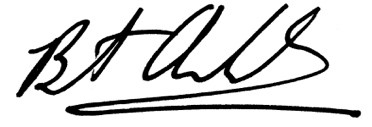Editor’s Message
[1] Greetings, everyone, and welcome to Volume 30, Issue 2 of Music Theory Online! Having mentioned in the last issue’s Editor’s Message that we have begun recasting our logo and website, I feel obligated to let the readership know about our progress on that front. The work is continuing behind the scenes in a pace known all too well to those who reside in academia. The word I’d use is “glacial,” to signal that we are moving extremely slowly but inexorably forward!
[2] With that update out of the way, let us address the real motivation for your visit here today, which is to survey the new music theory articles on offer! We are proud to present seven articles that treat musical works and treatises penned between 1727 and the present day, five of which center on music written in the last century. The first of these is James Donaldson’s “Kaleidoscopic Topics in the Music of György Ligeti and Thomas Adès.” Donaldson’s primary concern is isotopy, a term advanced by Umberto Eco to describe a process by which a reader constructs narrative meaning through the lens of a specific topic. More specifically, Donaldson adapts Johanna Frymoyer’s three-level model for identifying topics, newly building in techniques to trace synchronic formal processes. The resultant method, which poses processual open and closed isotopy trajectories, is shown to be effective in revealing semantic aspects of Ligeti’s and Adès’s referential styles.
[3] The second of three entries on the concert music side of the aisle is Christoph Neidhöfer’s “Gesture through the Lens of Pluridimensional Serialism in the Music of Camillo Togni.” This article investigates the composer’s more challenging later style, which, while known for luxuriating in fluctuations of rhythm, articulation, melodic contour, and dynamics, is nevertheless able to project strong sensations of gesture and directionality. By engaging with the composer’s sketch studies in light of Adorno’s theories, Neidhöfer sheds significant new light on Togni’s simultaneously rigorous and serendipitous compositional method. The third article is Simon Tönies’s “Pitch Registration and Harmonic Fields in Works of Pierre Boulez, Maroc Stroppa, and Yukiko Watanabe.” While an uncritical glance at the title might lead some to infer that the scope of this work is limited to just a few composers, the proposed method readily applies to many serial and algorithmic works—which, all too often, languish under the misconception that their structures and formal processes are wholly distinct. The response here, which concentrates analysis on the distribution of pitches in register, takes inspiration from Jean-Louis Leleu’s harmonic field analysis. Tönies’s innovation, which renders the analytic process more perception-oriented, shifts the focus away from interval cycles to auditory streams and the statistical accumulation of key intervals.
[4] The remaining twentieth- and twenty-first-century-minded articles center on pop music. Eron Smith’s “Prosodic Dissonance,” examines a condition familiar to listeners of pop, in which the delivery of a text as sung conflicts with how it is commonly spoken. Many theories of music have, of course, accounted for mismatches between spoken and sung emphasis, such as those arising from syncopation. Here the theorization is taken further: after defining linguistic stress and modeling how it is perceived to align or misalign when set musically (i.e., taking into consideration factors such as pitch, syncopation, ir/regular rhythm, and parallelism), the article lays out a stepwise procedure for identifying prosodic dissonance and demonstrates how tracking it enriches the structural and expressive analyses of texted works. The other article in this category, by David Geary, offers a new perspective on pop music form. Where typically text, harmony, texture, and timbre have held the most sway in determining form, Geary examines the “Formal Functions of Drum Patterns in Post-Millennial Pop Songs, 2012–2021.” The method he engineers to carry out this study effectively intermingles a macro approach—namely: carrying out corpus study analysis to reveal how drum patterns manifest, writ large, in a decade’s worth of top-ten hits—with a micro approach that polarizes drum patterns into layers, rhythm, and instrumentation to allow for greater sensitivity in determining their formal functions.
[5] The remaining two articles complement the first five in centering on traditionally tonal topics. The first of these is “A Thread of Recitative Ruffs: Schemas and Schenker’s Analysis of ‘Erbarm es, Gott’” by Paul Sherrill and Matthew Boyle. Continuing their longstanding work on schema theory, the pair of authors here investigate the “ruff,” a technique of harmonic (and by association in tonal music: narrative) disruption in which a
[6] As always, we, the hardworking team of authors, board, editors and staff of MTO, hope that you find the offerings in this issue all highly edifying and enjoyable. Whether you are looking to broaden your general theory knowledge, to shore up a research project (or two or three), or to retreat from the world for a moment into a calmer, more ordered oasis, the contents linked below should more than fit the bill. Best wishes, happy reading, and see you again in a quarter year!

Brent Auerbach, Editor-in-ChiefUniversity of Massachusetts Amherst